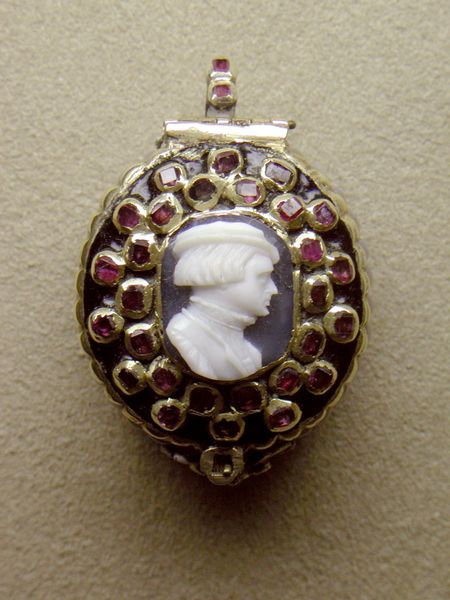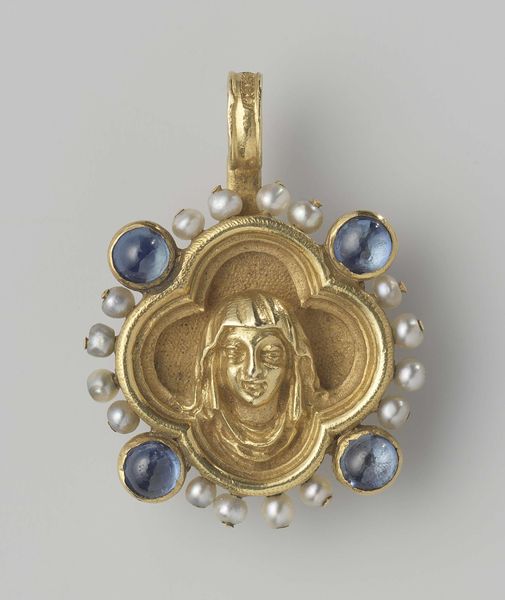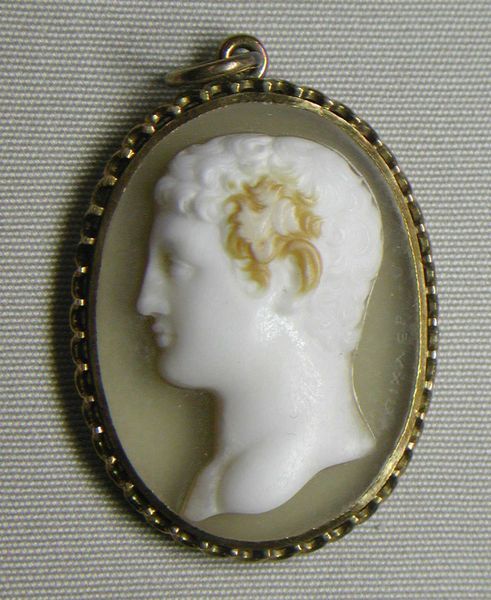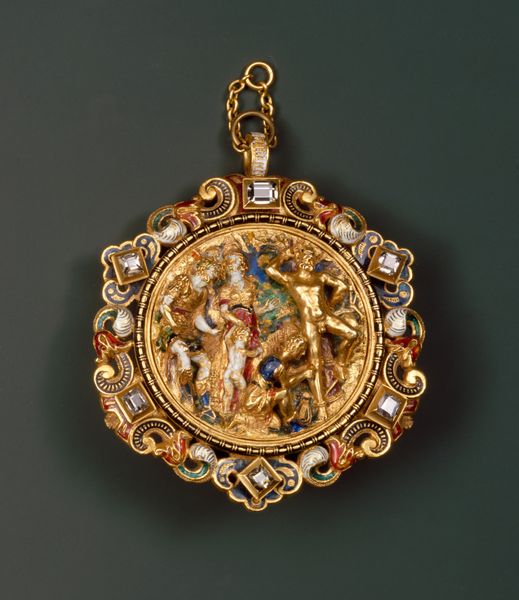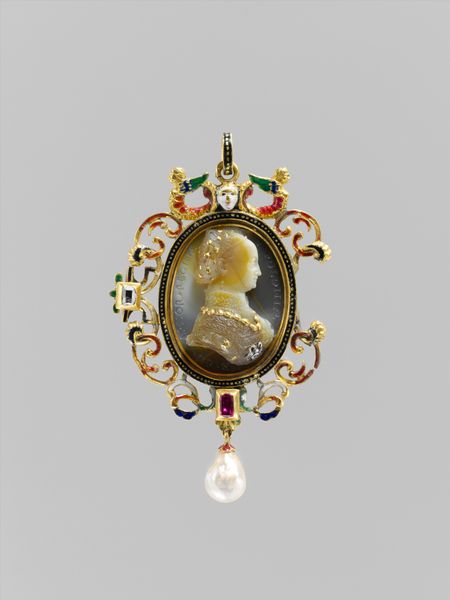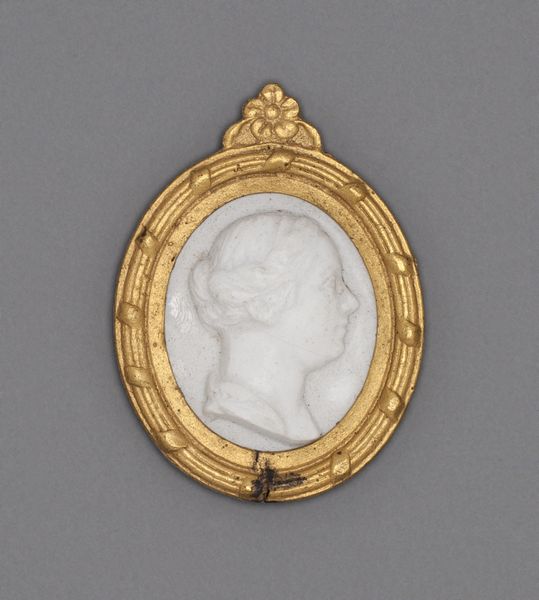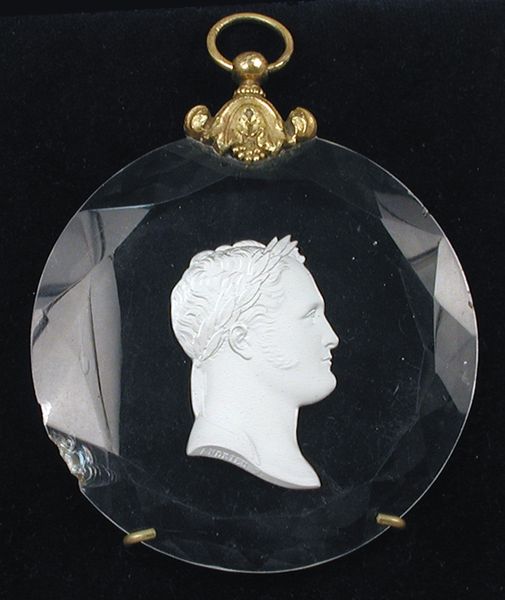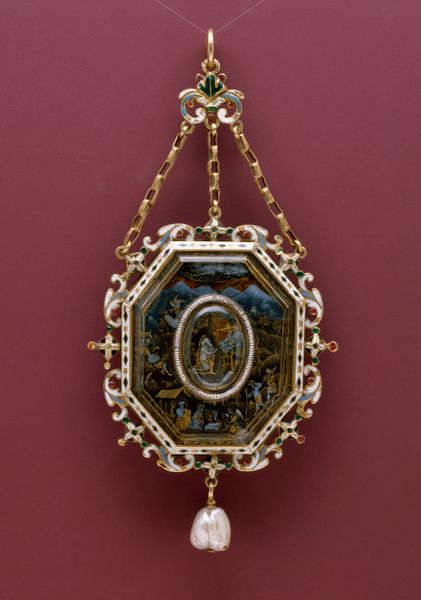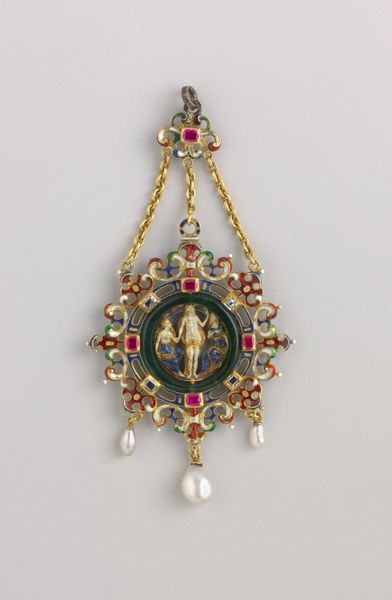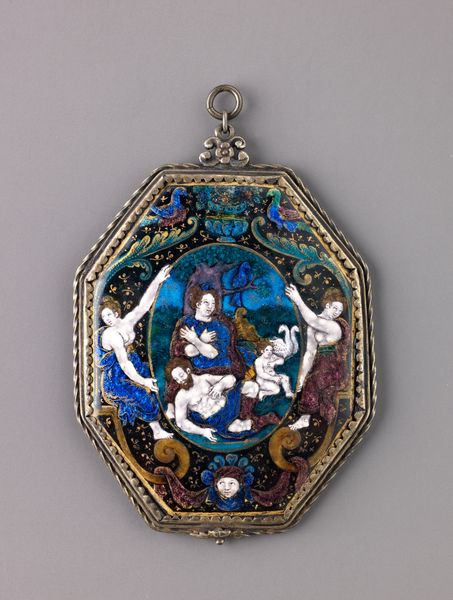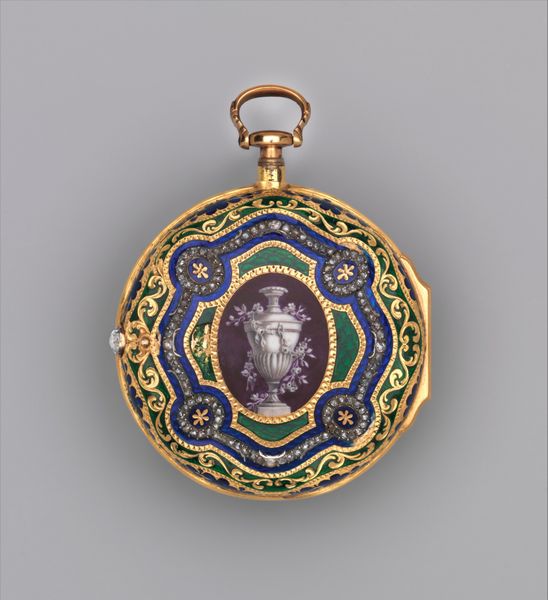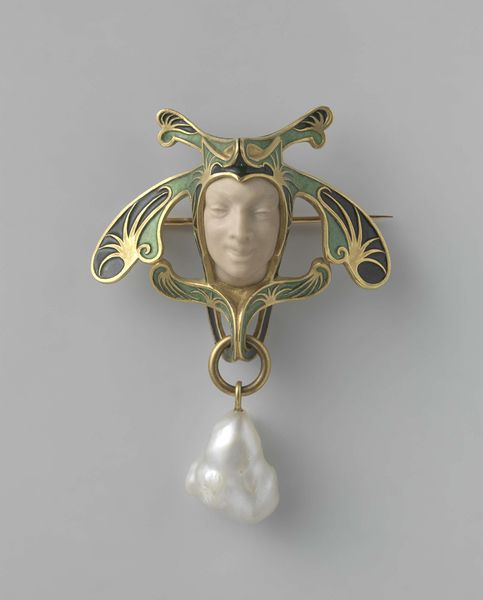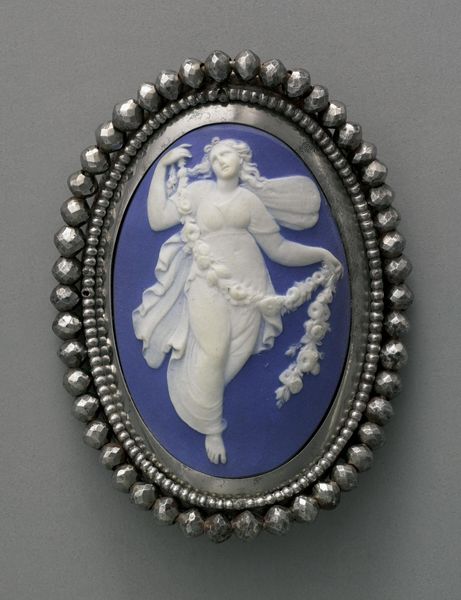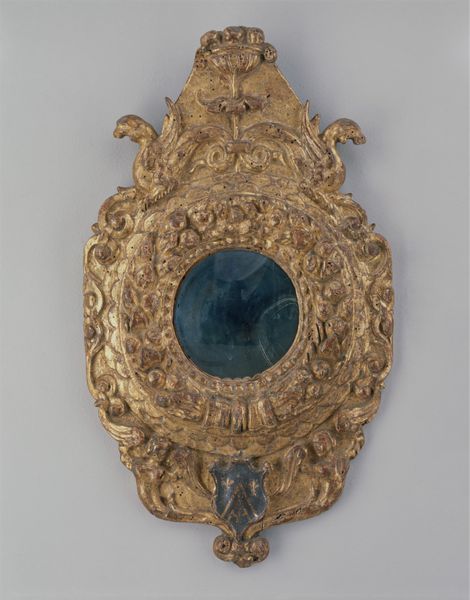
carving, metal, relief, sculpture
#
portrait
#
carving
#
metal
#
relief
#
jewelry design
#
jewelry
#
sculpture
#
jewelry
#
decorative-art
Dimensions: overall: 12 x 6.8 x 2.5 cm (4 3/4 x 2 11/16 x 1 in.)
Copyright: National Gallery of Art: CC0 1.0
Alfred André made this pendant with the head of Medusa using gold, chalcedony, enamel, and pearls. The fearsome Medusa, whose gaze could turn men to stone, was a popular subject in 19th-century France, a time when artists and writers were fascinated by classical mythology. Here, André presents a softened, almost serene version of the Gorgon's head carved in pale blue chalcedony. The elaborate gold frame, with its colorful enamel work and a dangling pearl, transforms the monstrous figure into a precious, wearable object. Medusa was often depicted in ancient Greek art as a symbol of protection, warding off evil. In the 19th century, she came to represent both danger and feminine power. Examining André’s pendant, we can consider the social context that shaped its creation. What was the status of women at this time? What anxieties did the figure of Medusa evoke or attempt to subvert? To answer these questions, we can consult historical texts, literary sources, and exhibition reviews. Art history allows us to explore the complex ways in which visual culture reflects and shapes the values of its time.
Comments
No comments
Be the first to comment and join the conversation on the ultimate creative platform.
